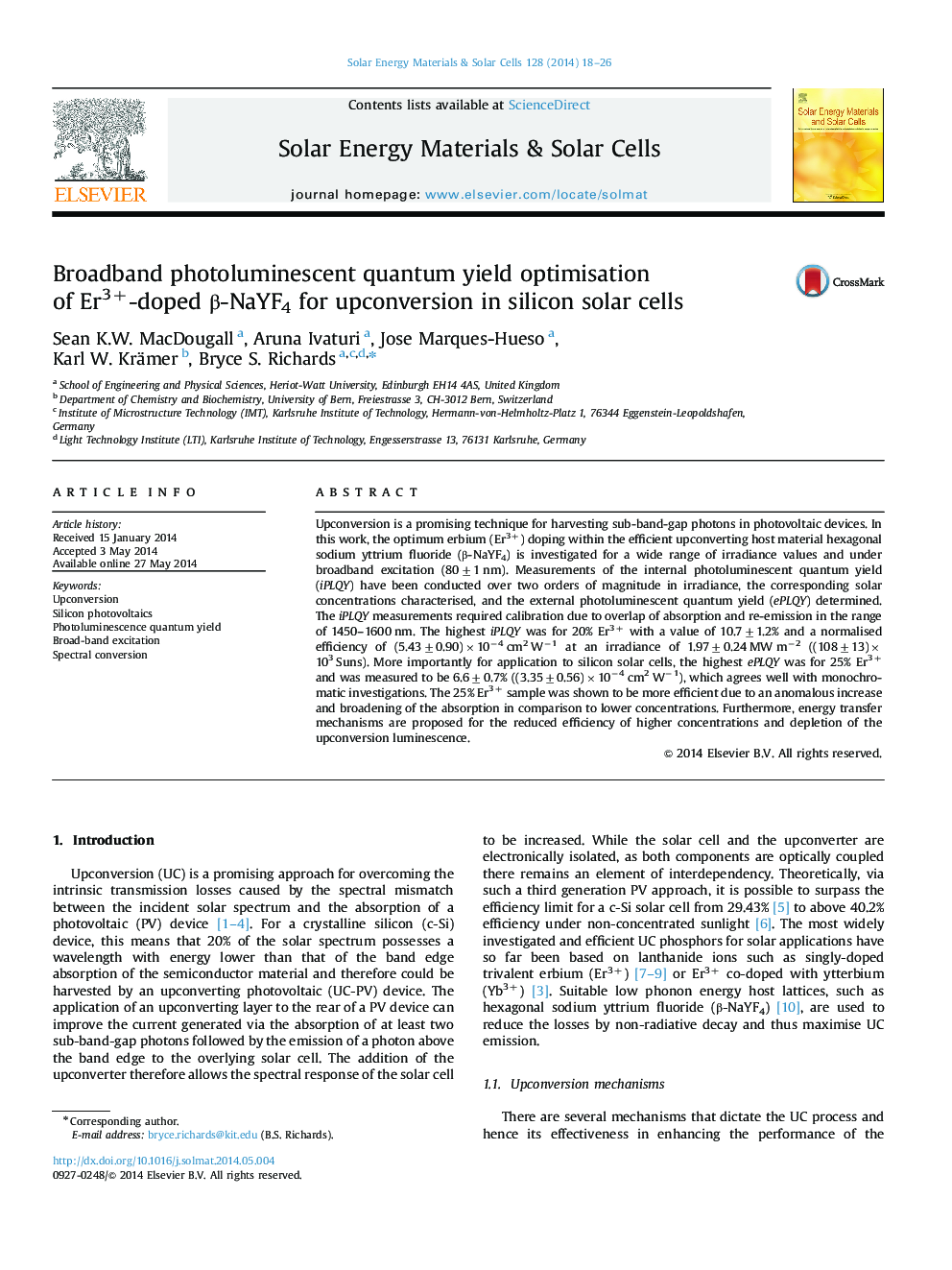| Article ID | Journal | Published Year | Pages | File Type |
|---|---|---|---|---|
| 77964 | Solar Energy Materials and Solar Cells | 2014 | 9 Pages |
•Er3+ doping of β-NaYF4 varied from 10 to 75 mol% for 980 nm upconversion emission.•Photoluminescent quantum yield (PLQY) found using broadband excitation (Sun-like).•The highest iPLQY was determined for β-NaYF4:20% Er3+ as 10.7±1.2%.•The highest ePLQY was found for β-NaYF4:25% Er3+ as 6.6±0.7%.•Absorptance spectrum and energy transfer rates are important factors for optimisation.
Upconversion is a promising technique for harvesting sub-band-gap photons in photovoltaic devices. In this work, the optimum erbium (Er3+) doping within the efficient upconverting host material hexagonal sodium yttrium fluoride (β-NaYF4) is investigated for a wide range of irradiance values and under broadband excitation (80±1 nm). Measurements of the internal photoluminescent quantum yield (iPLQY) have been conducted over two orders of magnitude in irradiance, the corresponding solar concentrations characterised, and the external photoluminescent quantum yield (ePLQY) determined. The iPLQY measurements required calibration due to overlap of absorption and re-emission in the range of 1450–1600 nm. The highest iPLQY was for 20% Er3+ with a value of 10.7±1.2% and a normalised efficiency of (5.43±0.90)×10−4 cm2 W−1 at an irradiance of 1.97±0.24 MW m−2 ((108±13)×103 Suns). More importantly for application to silicon solar cells, the highest ePLQY was for 25% Er3+ and was measured to be 6.6±0.7% ((3.35±0.56)×10−4 cm2 W−1), which agrees well with monochromatic investigations. The 25% Er3+ sample was shown to be more efficient due to an anomalous increase and broadening of the absorption in comparison to lower concentrations. Furthermore, energy transfer mechanisms are proposed for the reduced efficiency of higher concentrations and depletion of the upconversion luminescence.
Graphical abstractFigure optionsDownload full-size imageDownload as PowerPoint slide
